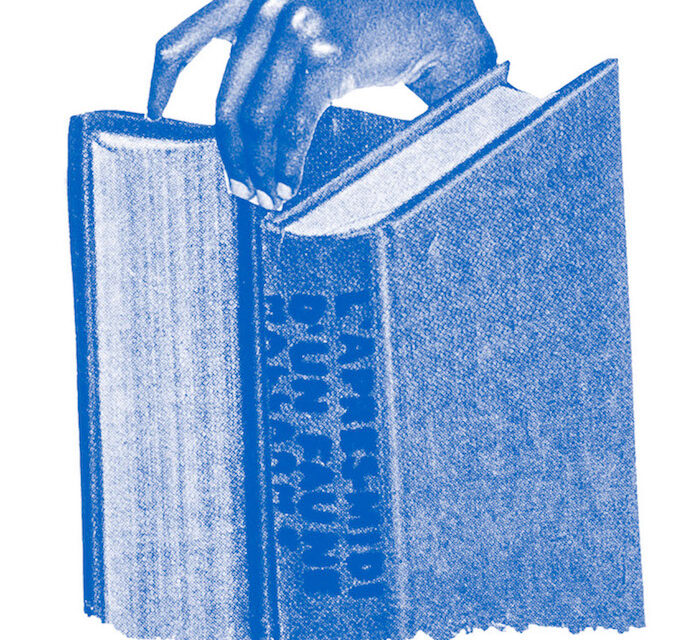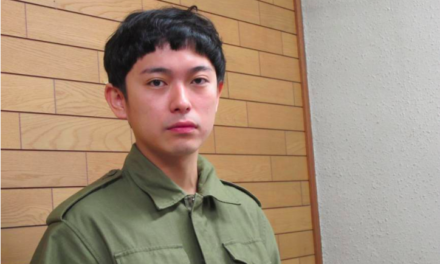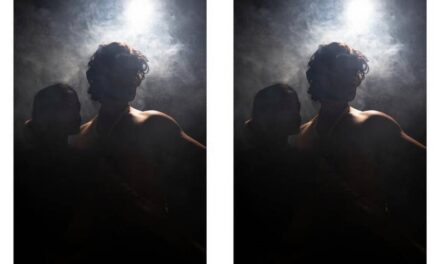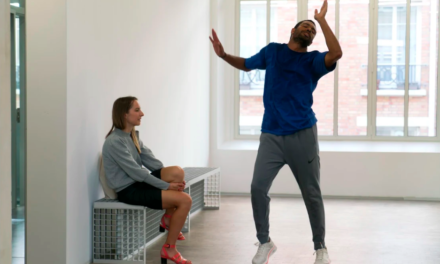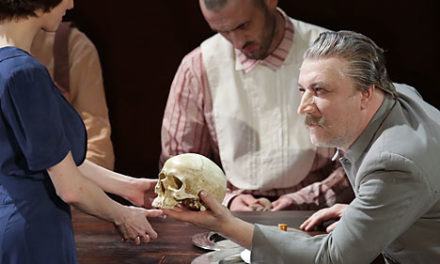What does it mean to build an oeuvre as a woman? There are still obstacles on the road that are related to being a woman. Which life questions are intertwined with the development of a life’s work? Ilse Ghekiere, the initiator of Engagement Arts, points out some concerns and intersections in a story that cannot but be personal.
CV Catastrophe
I always wanted to become an artist – ‘an artist in her own right’. Instead, other things happened. I studied dance. I performed in the work of several choreographers. I worked with a visual artist who called me ‘his muse’. I maintained a drawing practice to stay inspired and sane. I composed music on an untuned piano to deal with disappointment. I wrote a bunch of unpublished poems and short stories. I made prints with menstrual blood. I was unemployed for long stretches of time. I studied art history and started a Ph.D. in heritage studies, but dropped out after one year. I developed an object-based puppet performance for toddlers. I kept a writing correspondence with one of my best friends every week for five years. I translated colleagues’ subsidy applications instead of writing any for myself. I co-wrote a film. And I came to a point where I realized that something was not working.
I was doing everything and nothing at the same time. While trying to make my own living, I was depending on unemployment benefits, and even if things were accumulating, it didn’t feel it was adding up. Something in this world didn’t make sense. So I started reading, became a self-taught feminist and my world shifted. At the age of 32 (!), I finally applied for support and received my first artistic grant to research sexism in the Belgian dance field. I turned my writing into activism and published my first article, which led me to launch the Belgian anti-sexist movement called Engagement Arts.1 I gradually became someone who mostly organizes and communicates, focusing on the work that needs to be done collectively. Now, two years later, approaching the mid-stage of my career, I am five months pregnant and sometimes I really wonder how I got here. It’s far from the idea of the artist that I had in mind when I was twenty, but somehow that’s also fine.
Every time I need to update my CV, it’s still a catastrophe. Some people might be nice about it (‘oh, you did so many things’), but most others (including myself) will know that you either choose a clear and linear path – or you make the path you chose appear seamless and planned by being clever about what you include and what you leave out. Both strategies are somewhat artificial, but trying to make sense of one’s own path and communicating it to the outside world always is. As an artist, you learn very quickly that incoherence is something to avoid, that changing your mind will be seen as not knowing what you want, and that if you don’t invent your own narrative no one will do it for you. Of course, projections from the outside will inevitably become part of an artist’s narrative: and somewhere in between those lines, you will end up being identified. I remember an older artist telling me that as an artist you can be whatever you want to be. Of course, you can and should be whatever you want to be, but my experience is that the outside world still has a pretty strict idea of what an artist should be – or better yet – should not.
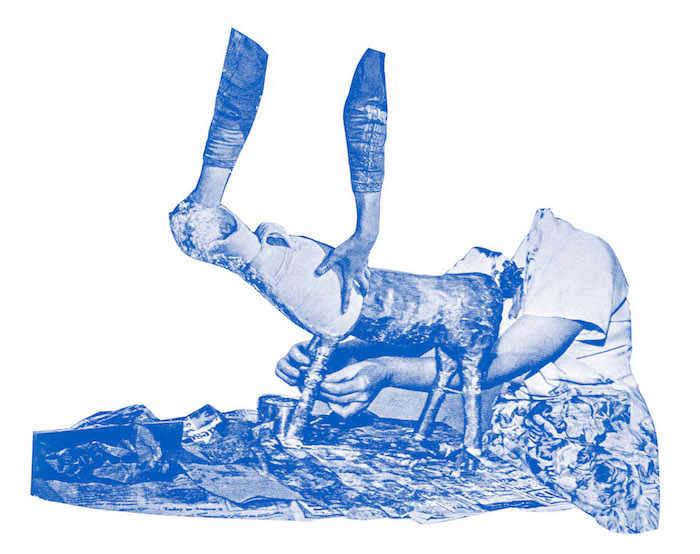
Image by Elsa B. Mason.
Drop Out
Maybe it’s changing now, but starting out in the field as a professional dancer, I had the impression that everyone was trying to work with at least one or two renowned choreographers, before starting to make their ‘own work’. It was common knowledge that one recognized reference on your CV equaled more chances of receiving support for yourself. Yet, becoming ‘a choreographer’ was something else, a title to be granted from the outside, something you needed to earn. Sometimes you would see dancers graduating from dance school and quite soon (if not immediately) they would be catapulted into the field as ‘emerging’ choreographers. How did this happen? These lucky emerging artists, it seemed, were mostly young – and often also Flemish –men. Over the years, I would see young women dancers similarly emerge with their own work, but somewhere down the road they would change course or drop out. Maybe dropping out is not the right word, since many of them might still be doing their own projects here and there – but they are generally in a different space, somewhere else; away from the center, off the radar, less visible. I have also seen some remarkable women dancers and makers disappear completely over time. Some have become producers supporting other makers, some turned to academia, some became part-time or full-time mothers. This is not a judgment. It’s more something you might observe out of the corner of your eye without being completely sure of how real or accurate it is. In that sense it was reassuring (almost a strange relief) to see this ‘drop-out effect’ confirmed in research carried out by Kunstenpunt into the artist’s socio-economic position (2016).2 According to their findings, 58% of performing artists in the age group below 35 is female, while in the group of +65-year-olds, this percentage has gone down to 13,3%. The study explains the high drop out rate for women in the performing arts (which include theatre, dance, music) as caused by two conditions that relate to dance specifically: the overrepresentation of women in dance on the one hand, and the physical toll of dancing on the other.3 Surely, these are important reasons, but after many conversations with women choreographers of my generation, there seems to be more at stake.
How Sexism Grinds
Pursuing a career in the arts is challenging for anyone. A woman artist, however, also faces the documented obstacles related to stereotyping, implicit bias, (sexual) harassment, the myth of the male genius and the female muse, prejudices against female leadership, lack of entitlement as well as the challenges that often come with parenthood.4 Any or all of these factors will accumulate in a working woman artist’s life and inevitably affect how her practice develops. Sexism (like other forms of discrimination) is like a grinding machine: on and on, in endless repetition, it slowly but surely removes layer by layer of even the thickest skins. One visual artist described it as being ‘like a thousand blows’. The discriminated person will eventually, over time, either give up or step aside. This is patriarchy at its most subtle: an ingenious system where putting up with sexism turns into accepting its hierarchy: acceptance as a coping mechanism. We accept so we can cope. For example, in my early career, an older male artist that I worked with called me ‘ambitious’ as if it was something bad. I have also been called an opportunist, a social climber, a competitive individualist for reasons that are still unclear to me. It is not as if I felt unwelcome in the art world, but there were always reminders about knowing my place. And in order not to be seen as a threat, I would gradually adjust where needed. As one does. I sometimes wonder if this is why we end up with women who are too nice, too kind, too willing, too patient, too understanding, too pretty and seemingly too uninteresting to become an artist who makes interesting work.
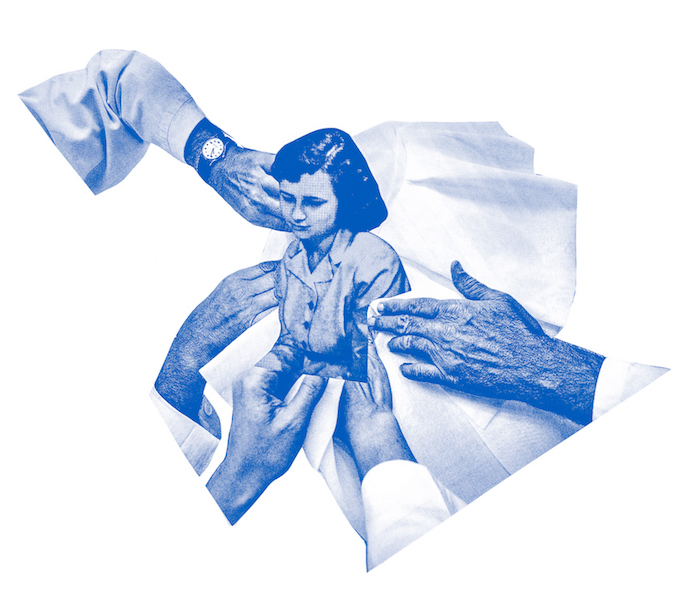
Image by Elsa B. Mason.
When working on this article, I tried to broach these issues spontaneously in talks with women from my generation who I see as ‘makers’, to understand how sexism manifests itself in and around the dance studio. It’s clear that there is a difference between early, mid and late-career challenges. Nevertheless, people carry their experiences and observations with them, in an attempt to make sense of their own trajectory, and of where they stand now. One choreographer talked about her post-graduation period and observed how many of her male peers brought an exuberant bodily confidence to the table. As she worked with someone who had that sense of entitlement, she admitted that her early career might even have indirectly benefited from his sense of somewhat pushy entitlement. However, later in the collaboration, she learned her lesson – without her knowledge or consent, her name was taken off a funding application that she co-wrote, as her male colleague thought her credit would narrow their chances of receiving funding. Another choreographer who also started her career in close collaboration with a young male choreographer, tells of how, during meetings with programmers, she would not be addressed, and would be spoken about as if she was not there. During talks after performances, questions would be directed to him, not her. In one review, her male collaborator was referred to as an ‘emerging talent’, while her own name was not even mentioned. She is now a choreographer in her own right, finally getting the credit she deserves. Nevertheless, she adds that it still makes her angry to this day.
A recurring topic among many women makers in dance and performing arts is the issue of leadership. Working in an art discipline that often involves other people, choreographers not only need to have good ideas, they also need to be able to lead a project and a team. Because of embedded stereotypes and expectations that surround the notion of what a leader is, many women feel uncomfortable taking this role. If they position themselves as leaders, it’s often in the face of implicit resistance, which not only makes it difficult to maintain a sense of authority but also adds to cumulative feelings of insecurity and self-doubt. Women choreographers told me stories of how their authority would repeatedly be challenged, also by other women, in a way they had never experienced working with, or for, men. They described how, in collaborative work, opinions or directions would be ignored when given by women, but immediately listened to afterward when repeated by a man. Studies have shown that people link deeper voices to authority and leadership.5 Because men generally have lower voices, they are advantaged in being recognized as someone with authority. As shameful as I feel about it now, I too have made fun of the high-pitched voice of a female choreographer I worked with. The laughs I got from my colleagues must also have influenced the belief in her capabilities. Since there are still so few women in positions of leadership in general (the field of culture and arts included), our models of how to relate to these ‘new leading figures’ are often lacking, or become clumsy and unsupportive, preventing women from becoming the leaders they could be.
Additionally, the term ‘emotional labor’ 6 is sometimes used by women choreographers to describe how they perform gendered expectations in order to win the trust of their co-workers. They are seen as ‘natural’ caregivers and listeners, as people who are always there to give emotional support. Even though attention paid to the emotional realities of co-workers is crucial in creating a healthy working environment, such labor can not only become a drain for the person deemed responsible but also counter-productive, as such work should not be her priority.
Gender inequality is further reflected in a remarkable gender pay gap in the age group of 20-35. According to research by Kunstenpunt, young female performing artists earn about 6000 euros less per year than their male counterparts.7 Later in life, the gender gap becomes less significant, most likely because wages for older performing artists stagnate in general. But how do we explain this early gender pay gap? I remember how a much younger colleague of mine had negotiated his wage by convincing the financial director of the company that the paid work he did before he started dance studies should be counted as work experience. Back then, I was supportive and impressed by his guts and negotiating skills. However strange it was that he was suddenly paid the same as me, who was older. When I started working with Engagement Arts, I would hear similar stories of how women dancers had found out that male colleagues were paid more for the same job, even when they had similar years of experience. That gender plays a part in the bargaining of wages is nothing new. But it’s hard to believe that the economic difference between young male and female performers is only a matter of negotiation.
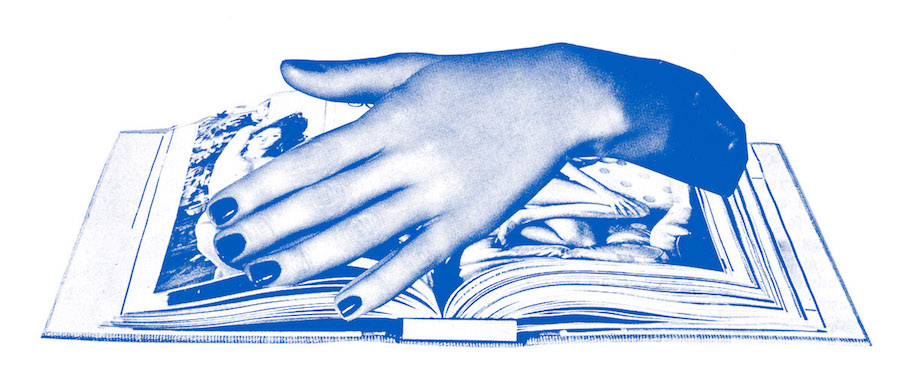
Image by Elsa B. Mason.
A programmer once admitted in conversation how shocked she was, after a couple of years working in a big theatre, to realize the glaring gender imbalance in the financial support of co-productions. Women makers simply got less. Sometimes this would be explained by the size of the project. But then again I wonder: do women really make ‘smaller’ performances? If so, is this a deliberate choice, or the result of restrictions or conditioning outside their will? A choreographer of my age recently told me that she has a similar impression. Being a Belgian resident with an international background, she struggles not only to find financial support and co-production but also to perform her work in Belgium. When she looks at her male, and often Flemish, peers who she graduated with, it seems as if they have better and easier access to local funding, co-production, and touring dates, while also making ‘bigger’ performances. There are no quantitative data to support this observation, but it would be interesting to have an analysis of gender inequality which takes into account every aspect that can add to the value of a choreographer’s career. How much funding? How many co-producers? How many residencies? How many reviews, interviews, articles? How much advertising? How many ‘likes’ on social media when posting an announcement for an upcoming new creation? How far-reaching is the artist’s network? How many programmers are attending performances? How many e-mails to theatres are left unanswered? How is the author credited?
The value of an artist goes beyond the notion of talent alone. If sexism is structural, we need to scrutinize all aspects that play into the different career stages, from early training to late-career. We need to understand how opportunity functions and how cumulative attention adds up exponentially over time, as any kind of support will help to anchor and sustain the development of an artistic career up to the point of retirement.
The Author is Dead, Long Live the Feminist Author
Data from the 2018 labor monitor in the performing arts show a hopeful trend: 45,3% of artists who call themselves authors are women. This is the highest percentage since 2011. The increase is partly found among those younger than 35 (+2,39% since 2011), but it is especially noticeable in the group aged above 45 (+10,21% since 2011).8 In short, more women, both young and old, call themselves artistic authors today! Although this is wonderful news, the question remains: How do you build a body of work in a patriarchal world that only changes ever so slowly?
Many of my colleagues with feminist-inspired artistic practices reject the word oeuvre. It is too French, Euro-centric, and burdened by patriarchal historical connotations to which they no longer wish to subscribe. A ‘body of work’ seems to be more welcome, but it still implies an author, which can be enough to make it ‘problematic’. During the last decade or so, there has been a movement of performing artists, of all genders, exploring less ego-centric practices, trying to look for different definitions of authorship, and focusing on more collaborative and horizontal working structures – thank you, Walter Benjamin and Roland Barthes?9 But, even if the ‘death of the author’ could provide a frame to potentially undo patriarchal histories and help serve feminist goals, there are reasons to suspect a total rejection of the idea of authorship.10 It’s almost as if feminist-inspired artists are expected to reject authorship by definition as if the concept itself was something ‘infected’. I am aware that it is a word laden with much dead patriarchal weight, but precisely because a term like ‘oeuvre’ is so linked to a white, male, heteronormative, Western-centered tradition there is all the more reason for women and marginalized groups to reclaim those terms to shed light on, and claim, their own bodies of work. I am still not sure where I would place myself on the spectrum between individual and collective authorship, but I appreciate both extremes and so far I enjoy floating among them.
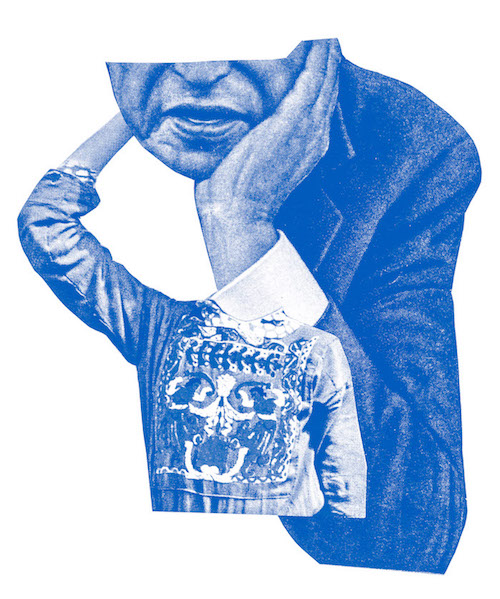
Image by Elsa B. Mason.
Future Bodies
I wasn’t planning on getting pregnant. At least not now – maybe not ever. Becoming professionally self-sustainable in the arts was a slow and difficult path – as if sitting in a waiting room for things to kick off; as if being in a state of constant preparation. While most of my colleagues are now facing the prospect of mid-career challenges, I felt I was just getting started. When I saw the two stripes on the pregnancy test, there was a deep disappointment – a sense of impossibility, defeat. Had I really worked this hard to end up here: as ‘the inevitable mother’?
Women have always been seen as waiting: waiting to be asked, waiting for our menses, in fear lest they do or do not come, waiting for men to come home from wars, or from work, waiting for children to grow up, or for the birth of a new child, or for menopause. In my own pregnancy I dealt with this waiting, this female fate, by denying every powerful aspect of myself. I became dissociated both from my immediate, present, bodily experience and from my reading, thinking, writing life.11
This is Adrienne Rich who, like many feminist writers, is not only the author of a large body of work – both as a poet and an essayist – but who also happens to be a mother of three children. What I learned from feminism is that – as long as we gravitate towards that which is supportive to us – obstacles will turn into opening doors and new relations. When I discovered my pregnancy I immediately told many of my dear feminist colleagues. Mothers or not, they all supported my decision, some recommending me feminist books and essays that helped guide me through a labyrinth of conflicting thoughts. I often hear that women miss role models, but when I look around, I find plenty of them, in feminist literature as well as in my close environment. Redefining artistic career models is a practice of looking around, of discovering hidden histories. It is a practice of deconstructing – of undoing notions of success and what we see as valuable. It is a practice of insisting on renegotiating time and allowing other rhythms into one’s life and career. Of allowing patience, because being an artist takes time. When we invite different models of artistic trajectories, we not only invest in ourselves but contribute to much-needed changes in the field of performing arts at large, by becoming the role models we want to see. The body of work of a feminist artist never exists in isolation. On the shoulders of the women who came before us, we stand twice as tall. Always in relation to several histories of bodies, together with and among bodies and bodies and bodies of work.
Note to the reader: My observations are mostly personal and limited by my own framework. In this article, I have chosen to talk about gender inequality using terms that relate to a binary division of human beings into ‘women’ and ‘men’. As far as I know, there are no data available on the career obstacles for differently gendered people in the Flemish arts. Other forms of discrimination (such as racism, ableism, classism) undeniably add to this and have to be investigated from an intersectional perspective.
Footnotes:
1. ENGAGEMENT is an artist-led movement that tackles sexual harassment, sexism and power abuse in the Belgian arts field (www.engagementarts.be).
2. Siongers, J., Van Steen, A., & Lievens, J. (2016). Loont passie? Een onderzoek naar de sociaal-economische positie van professionele kunstenaars in Vlaanderen. Ghent: CuDOS, UGent.
3. Vlaamse overheid, Kunstenpunt, Kunstenloket, Vlaams Audiovisueel Fonds (VAF), Vlaams Fonds voor de Letteren (VFL), Sociaal Fonds voor de Podiumkunsten (SFP), ACOD-Cultuur & Overleg Kunstenorganisaties (oKo) (2016). Loont passie? Een onderzoek naar de sociaal-economische positie van professionele kunstenaars in Vlaanderen. Samenvatting, p. 31.
4. Hillaert, W. & Hesters, D. (2016). No woman’s land. In Rekta:Versa (Rekto:Verso) 73 (also see www.rektoverso.be); Willekens, M., Siongers, J., Pissens, L., & Lievens, J. (2018). Zo man, zo vrouw? Gender en de creatieve sector in Vlaanderen. Ghent: CuDOS, UGent; Sussman, A. L. (2019, 11 januari), The Challenges Female Artists Face Mid-Career via www.artsy.net; European Expert Network on Culture and Audiovisual (2019). Gender gaps in the Cultural and Creative Sectors, p. 35-42 (also see http://www.eenca.com/index.cfm/publications/gender-gaps-in-the-cultural-and-creative-sectors/).
5. Anderson, R. C. & Klofstad, C. A. (2012). “Preference for Leaders with Masculine Voices Holds in the Case of Feminine Leadership Roles”, PLoS ONE 7(12); Mayew, W. et al, (2013). “Voice pitch and the labor market success of male chief executive officers”, Evolution and Human Behavior 34, p. 243-248.
6. Emotional labor is the process of managing feelings and expressions to fulfill a job’s emotional requirements. More specifically, workers are expected to regulate their emotions during interactions with customers, co-workers, and superiors. This includes analysis and decision making in terms of the expression of emotion, whether actually felt or not, as well as its opposite: the suppression of emotions that are felt but not expressed. The term was coined by the sociologist Arlie Russell Hochschild in 1983. (See: Hochschild, A. R. (1983). The Managed Heart: Commercialization of Human Feeling. Berkeley: University of California Press).
7. Vlaamse overheid, Kunstenpunt, Kunstenloket, Vlaams Audiovisueel Fonds (VAF), Vlaams Fonds voor de Letteren (VFL), Sociaal Fonds voor de Podiumkunsten (SFP), ACOD-Cultuur & Overleg Kunstenorganisaties (oKo), p. 33.
8. Sociaal Fonds Voor Podiumkunsten (2018). Arbeidsmonitor (to be published).
9. Benjamin, W. (1934), “The Author as Producer”, New Left Review 1 (62); Barthes R. (1967), “The Death of the Author”, Aspen 5–6.
10. Walker C. (1990), “Feminist Literary Criticism and the Author”, Critical Inquiry 16 (3), p. 551-571; Meagher S. (1996). “Writing/Reading Barthes As Woman”, Symplokē 4 (1/2), p. 51-60.
11. Rich A. (1976). “Anger and Tenderness” in: Of Woman Born. Motherhood as Experience and Institution. W. New York; W. Norton & Company
This article was originally posted at https://e-tcetera.be on December 18th, 2019 and has been reposted with permission. To read the original article, click here.
This post was written by the author in their personal capacity.The opinions expressed in this article are the author’s own and do not reflect the view of The Theatre Times, their staff or collaborators.
This post was written by Ilse Ghekiere.
The views expressed here belong to the author and do not necessarily reflect our views and opinions.

